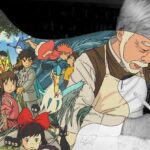Studio Ghibli: The Art and Magic of Japanese Animation
Introduction to Studio Ghibli
Studio Ghibli is one of the most renowned animation studios in the world, celebrated for its unique storytelling, breathtaking animation, and deep emotional narratives. Founded in 1985 by legendary filmmakers Hayao Miyazaki, Isao Takahata, and Toshio Suzuki, Studio Ghibli has created timeless animated films that captivate audiences of all ages.
What is Ghibli Art?
Ghibli art refers to the distinctive visual style and artistic approach used in Studio Ghibli films. This style is known for its hand-drawn animation, rich color palettes, intricate backgrounds, and expressive character designs. Unlike many modern animations that rely heavily on digital techniques, Ghibli maintains a handcrafted aesthetic that enhances its magical storytelling.

Characteristics of Ghibli Art
- Hand-Drawn Animation: Most of Studio Ghibli’s films are traditionally animated, giving them a warm and organic feel.
- Detailed Backgrounds: Each scene is crafted with meticulous detail, from bustling cityscapes to serene natural landscapes.
- Emotional Expression: The characters are designed with a focus on facial expressions and gestures that convey deep emotions.
- Natural Elements: Ghibli films often feature lush greenery, flowing water, and dynamic skies, emphasizing the beauty of nature.
- Whimsical and Fantastical Designs: Whether it’s flying castles or magical creatures, Ghibli’s world-building is filled with imagination.
Famous Studio Ghibli Films and Their Artistic Influence
- My Neighbor Totoro (1988) – Known for its soft color palette and heartwarming rural landscapes.
- Spirited Away (2001) – Features intricate architecture, vibrant spirit creatures, and breathtaking fantasy realms.
- Howl’s Moving Castle (2004) – Showcases stunning steampunk-inspired environments and fluid animation.
- Princess Mononoke (1997) – A darker, more detailed depiction of ancient forests and mythical creatures.
- Kiki’s Delivery Service (1989) – Captures European-style urban settings with warm, nostalgic tones.
Why is Ghibli Art So Popular?
Studio Ghibli’s artistic style resonates deeply with audiences due to its attention to detail, emotional depth, and imaginative visuals. The films create immersive worlds that feel real yet magical, offering both nostalgia and wonder.

The Legacy of Ghibli Art
Ghibli’s art style has influenced countless animators and artists worldwide. The studio continues to inspire future generations through exhibitions, art books, and new projects. Their commitment to hand-drawn animation ensures that the magic of Ghibli’s art remains timeless.
Conclusion
Studio Ghibli’s art is more than just animation; it is a form of visual storytelling that touches hearts and minds. Its delicate balance of fantasy and reality, combined with stunning artistic techniques, makes it a cherished treasure in the world of cinema.







